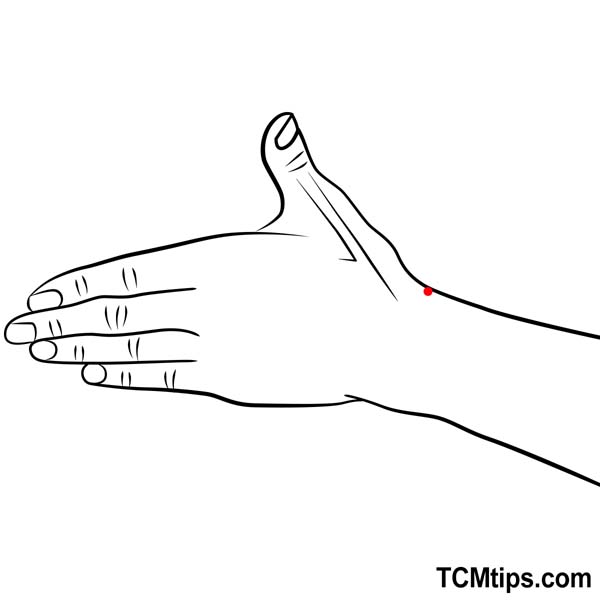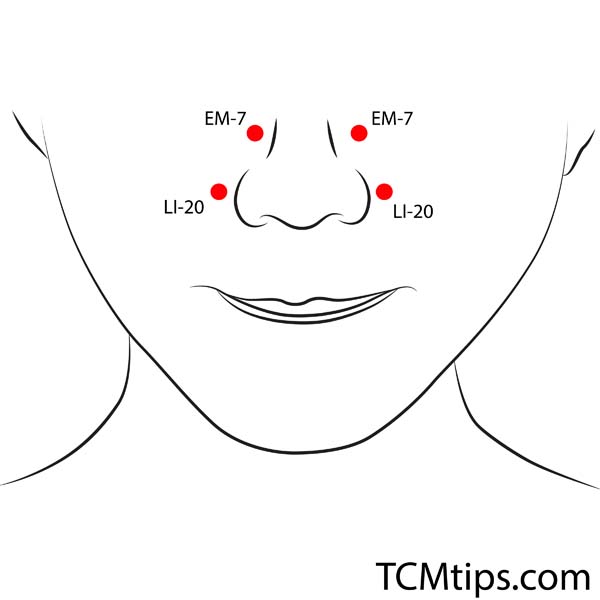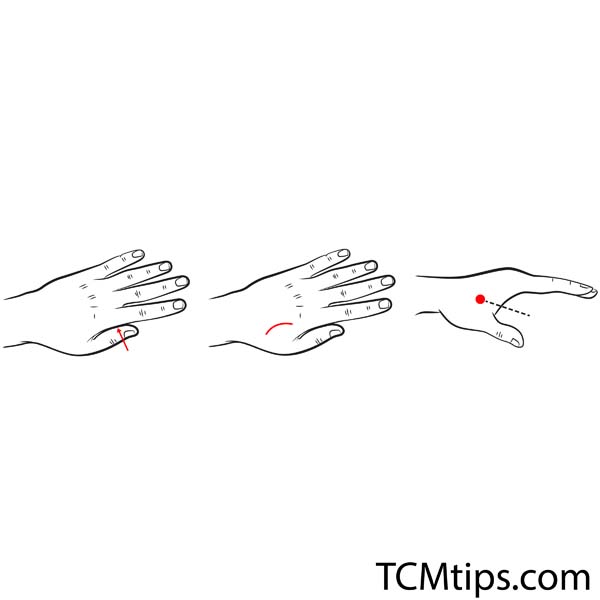Quitting smoking helps you live healthier and increases your life span. However, like most habits, smoking is difficult to stop. If you’ve tried western medicine smoking cessation drugs with no help, it’s time to switch up to natural methods that work. These acupressure points to quit smoking will help you curb the cravings for nicotine and eventually quit smoking.
However, you have to be emotionally prepared to quit smoking for these acupuncture points for smoking cessation to work. In this article, I’ll show you how daunting your leaving smoking journey is and how acupuncture can be the savior you’ve been praying for all along.
Will Acupuncture Help Me Quit Smoking?

Yes, acupuncture will help you quit smoking. Research has it that acupuncture can help curb cravings for a cigarette in a long time. However, you will have to be tobacco-free for at least 24 hours before your acupuncture therapy.
Doctor Starkey, a professional acupuncture therapist, believes that when patients seeking acupuncture points for smoking cessation take this mighty first step, they show that they have the mindset required to quit smoking for good.
The mental act of throwing cigarettes away is vital to the process. If you can get to this point and get committed to your acupuncture therapy, you will find that you’d be seeing the doctor lesser times as the week proceeds.
At some point, when your withdrawal symptoms start to fade, you begin to see the doctor once a week. This eventually ends when you become tobacco-free.
Research has shown that acupuncture reduces the smoker’s taste of tobacco and his/her desire to smoke to the point where the smoker quits smoking. The effect of using acupressure to stop smoking can last for at least five years.
What Is The Hardest Part Of Quitting Smoking?

Quitting smoking is more than having the willpower to stop. If it were just the willpower, about 3 to 5 percent of addicts would have successfully quit smoking. In addition to your resolve, you need to take the correct smoking cessation drugs. This would increase your smoking cessation success rate to 20 to 50 percent.
Even with all these, many addicted smokers haven’t had great success quitting smoking. They usually are not strong enough to battle “nicotine withdrawal syndrome,” the monster that comes with quitting smoking.
Some claim that nicotine withdrawal syndrome gets intensified when you use Western medicine for smoking cessation such as Jiebishi or nicotine replacement therapies such as chewing tablets, inhalants, and patches.
Chinese medicine then provides a better option through acupuncture and acupressure points to quit smoking.
The Proven Acupressure Points To Quit Smoking
There are a couple of self-administered acupressure points to quit smoking. Research has confirmed three of these to change your taste for tobacco, reduce your craving for nicotine, and eventually stop smoking. They are as follows:
1. Tim Mee – Alter the Taste of Cigarettes

Tim Mee is an “extra” acupressure point to quit smoking that is located on the wrist. You’ll find it almost a finger’s breadth above the transverse crease of the wrist, on the inside of the arm. It is on the same level with LU 7 and very close to LI 5 in a depression between the tendons that form the anatomical snuffbox.
Tim Mee is often used in conjunction with Lung 7 (LU 7), the most potent acupoint of the lung meridian, to function correctly. Besides its exclusive use for changing the way cigarettes taste, Tim Mee, in conjunction with LU7, can treat conditions related to the head and neck.
On its own, LU 7 is famous for the treatment of cough and sore throat. You can also use it to stimulate your memory and improve blood circulation in the brain. Here are other acupressure points for cough, phlegm, and nasal congestion.
2. Acupoint: LI-20 (Other Names: Large Intestine-20/Ying Xiang/Welcome Fragrance)

LI 20 is the last acupoint of the Large Intestine meridian that is effective for quitting smoking. This acupoint helps to change the sense of smell of smokers. It is located in the nasolabial sulcus, at the same level as the lateral border’s midpoint close to the nostrils. Its Chinese name is Yingxiang which translates to “Welcome Fragrance” in English.
Although it is a Large Intestine acupoint, it is located on the face. However, like the bowel, this acupressure point to quit smoking performs the function of letting go through the nostrils. When you experience cold symptoms like sinusitis, this acupoint releases this accumulation, clearing what the body does not need.
Because of this, LI20 is used to open the nose and to improve breathing. Clinically, it can be used to relieve Rhinitis, Sinusitis, Acne, Abscesses of the Mouth, and Toothache. All you have to do to activate this acupressure point is to use your pinkies to gently press into the groove on either side of your nostrils, then hold.
You can also try to move your pinkies in gentle circles while holding this acupoint. It will feel comforting. It is best to keep performing this self-acupressure regularly until symptoms dissipate.
If you’re ill and you’ve lost your sense of smell, or you fear you’re coming down with Covid-19, you can use these other acupoints to repair your loss of taste and smell.
3. Acupoint: LI-4 (Other Names: Large Intestine-4/He Gu/Joining Valley)

LI 4 is a Large Intestine meridian acupressure that relieves the craving for cigarettes. However, unlike LI 20, this acupoint is located on the hand. You’ll find it on the highest spot of the muscle when you bring your thumb, and index fingers close together.
LI 4’s Chinese name is He GU, which interprets as Union Valley in English. Clinically, you use He Gu to treat stress, facial pain, headaches, toothaches, and neck pain. Some Chinese text shows that this Large Intestine acupoint can relieve headaches, constipation, general pain, and even delayed labor.
However, experts advise not to use He Gu during pregnancy as it may induce labor. Meanwhile, to activate LI 4, locate the point and press it firmly to massage and stimulate. You can do this for up to five seconds and ensure to relax and take a deep breath while doing it.
Research exists to show the indication of this acupressure point. A study by the Journal of Orofacial Pain proved that the stimulation of LI4 markedly reduced myofascial pain of the jaw muscles.
Recently, a Cochrane systematic review on acupuncture in migraine and tension-type headaches showed that you could use acupoints as an effective and valuable option for easing migraines and tension-type headaches.
According to TCM experts, LI-4 is also one of the vital acupressure points for the kidney.
Auricular Acupuncture And Smoking Cessation

In addition to the acupressure points to quit smoking explained above, ear acupressure are also effective for smoking cessation. This type of acupressure (also known as auricular acupuncture) is more effective for smoking cessation than nicotine replacement therapy.
Nicotine replacement therapy, one of the most prescribed treatments for stopping smoking, enhances the overall rate of quitting by 50 to 70 percent. However, when used alone, nicotine replacement therapy has a smoking cessation success rate of 6 to 20 percent.
On the other hand, the use of acupuncture for quitting smoking has a success rate of 45 percent. Auricular acupuncture is one of the most effective kinds of acupuncture for smoking cessation. It is based on the theory that there are certain points on the ear that corresponds to major systems or organs of the body. When you manipulate these points either through acupuncture or acupressure, they accomplish a healing effect on the targeted organ or system.
If you enroll in acupuncture sessions to quit smoking, you can also apply ear acupressure at home to extend the effect. However, this self-administered auricular acupressure will require you to know the right points on the ear to massage.
Our Ear Seed Kit for Multi-Conditions with Clear Placement Instructions is the perfect kit you need for self-administered auricular acupressure to quit smoking. It is a vaccaria seed with adhesive tapes, which you can place on specific acupoints in the ear. Then, you can stimulate these points by applying pressure with your finger. The kit comes with everything you need for auricular acupressure, plus easy-to-follow instructions that shows you the exact acupressure points on the ear to place the ear seeds. Get it here.
You can also download 3 ear acupressure points charts for effective pain relief here.

Try our Anti-Aging Gua Sha Tool designed to bring out your skin’s natural glow.
Best Gua Sha Product- Anti-Aging: The tool is designed to target 11 specific aging signs such as wrinkles and sagging skin. By following the 7-step routine, users can improve skin firmness and reduce fine lines naturally.
- Enhances Skincare Routine: It works effectively with serums and lotions, boosting absorption and efficacy of skincare products.
- Visible Skin Improvement: Users can expect a smoother complexion, reduced puffiness, and a more youthful appearance.
 P. Sze
P. Sze 
















